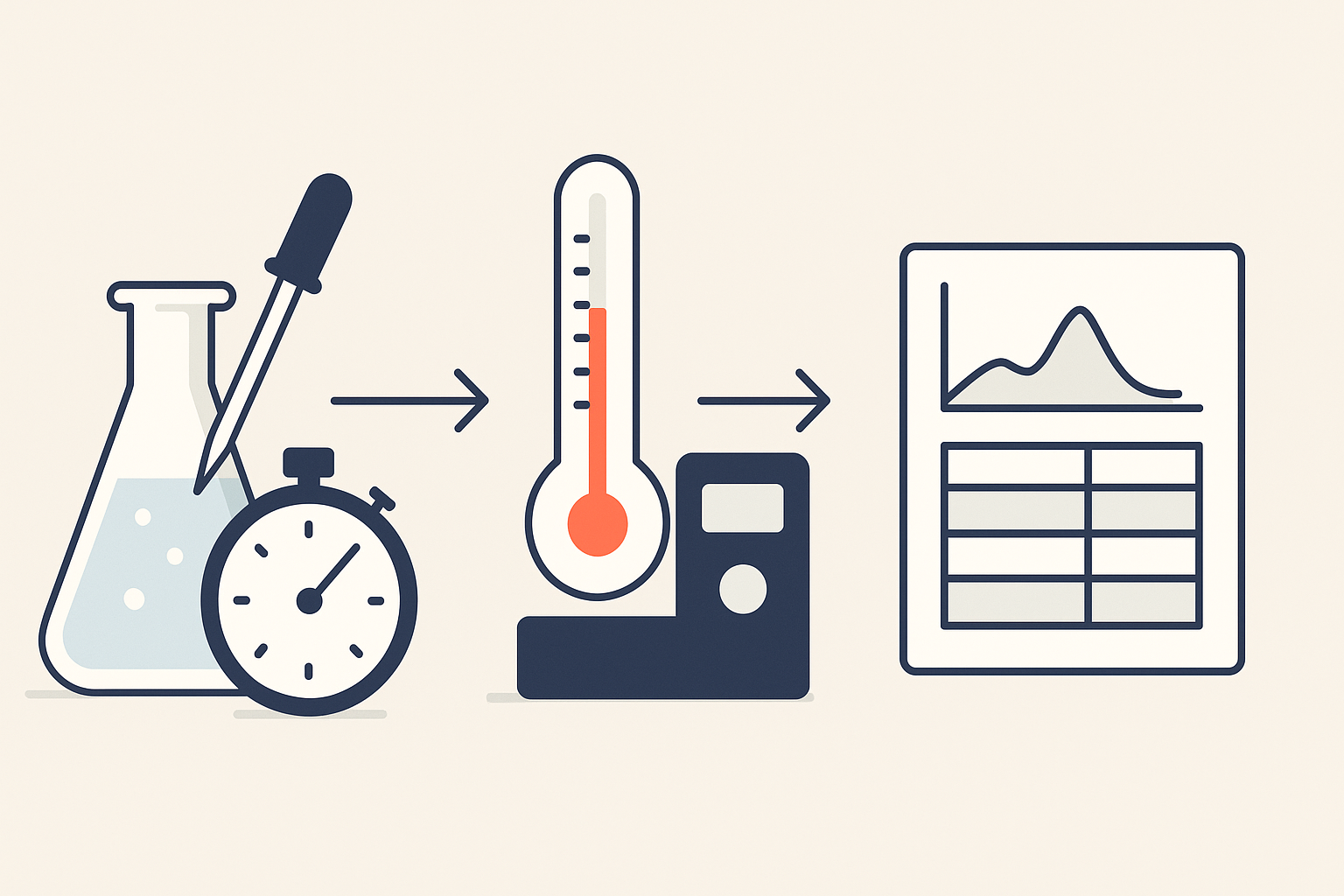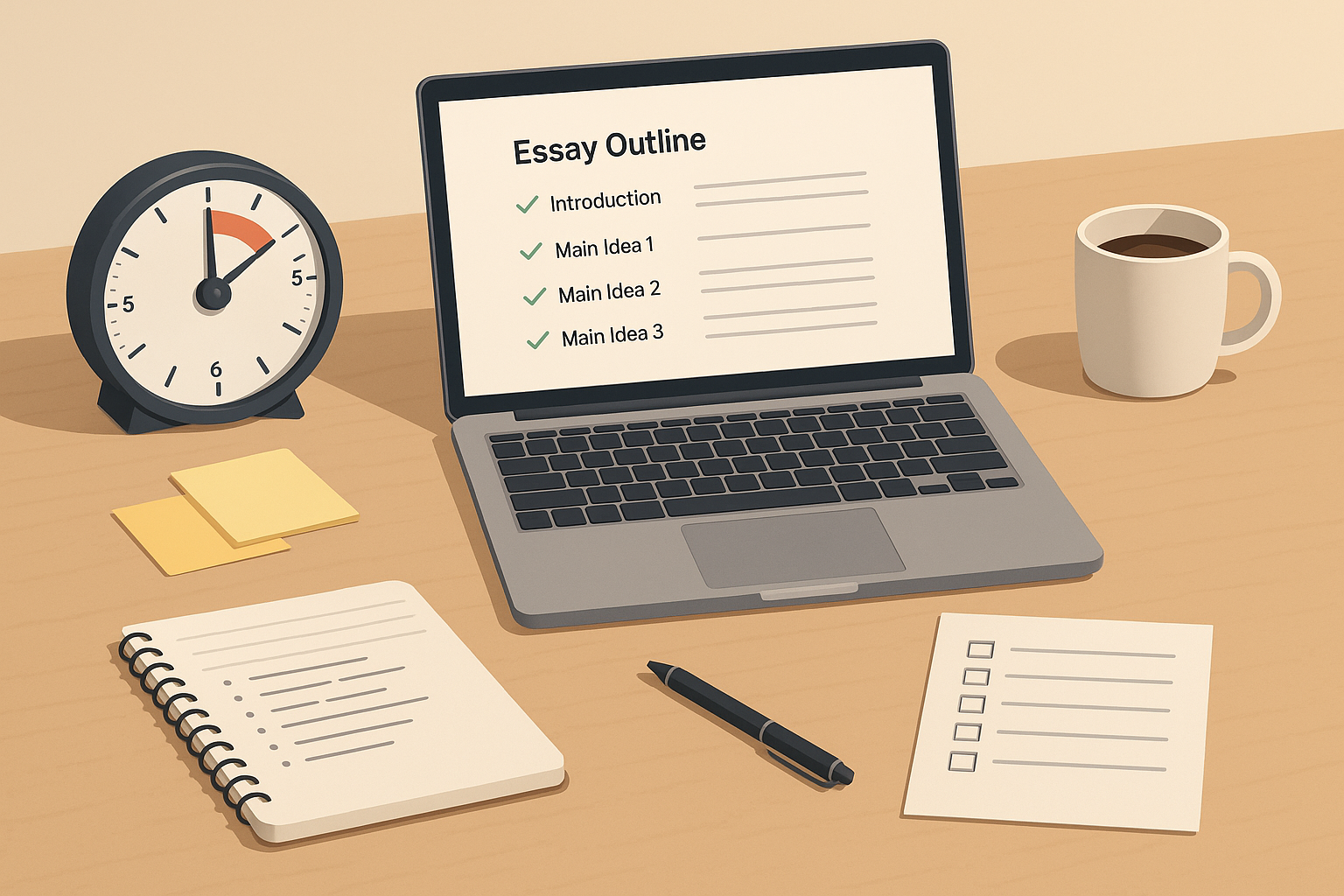Table of contents
A one-page research proposal convinces a supervisor that your idea is clear, feasible, and valuable—without the fluff. Use the template below with target word counts and a 30-minute writing workflow to move from blank page to submission-ready draft today. You’ll also see a concise example you can adapt instantly.
Table of Contents
-
What a One-Page Proposal Must Prove — in Plain English
-
The One-Page Template (with word counts)
-
The 30-Minute Writing Workflow
-
Example: Single-Page Proposal (Sample Text)
-
Submission-Ready Checklist & Next Steps
What a One-Page Proposal Must Prove — in Plain English
A good proposal is not a mini-thesis; it’s a decision-enabling document. In one page, your reader needs to see that you:
-
Know the problem well enough to phrase it crisply.
-
Ask an answerable question (or two) that fits your course, time, and resources.
-
Have a reasonable method that collects the right data and shows how you’ll analyze it.
-
Understand value and limits—what your study will contribute and what it won’t.
In practical terms, the page should make a supervisor think: “This is focused, doable, and worth green-lighting.” That judgment hinges on clarity over jargon. Replace vague claims (“social media affects learning”) with tractable, measurable targets (“do short-form videos correlate with reduced sustained attention during 30-minute study sessions?”).
Two filters keep you honest:
-
Falsifiability: Could the results reasonably show no effect or an effect opposite to your expectation? If not, revise your question.
-
Feasibility: Could a motivated student finish this with available data/tools within the deadline? If not, narrow scope (fewer variables, smaller sample, shorter timeline).
Bottom line: Your one-pager should read like a promise you can keep—clear objective, specific question(s), concise method, expected contributions, and a brief timeline.
The One-Page Template (with word counts)
Use the table to structure the proposal. The targets add up to roughly one page (single-spaced, readable font). Keep sentences short and prefer active verbs.
| Section (Order) | Goal | Target Length | Prompts that unlock clarity |
|---|---|---|---|
| Working Title | Signal topic and angle | 8–12 words | “The [mechanism] of [X] on [Y] in [population].” |
| Problem & Rationale | Why this matters now | 90–120 words | “What breaks if we ignore this problem? Who is affected? What is the smallest piece I can study that still matters?” |
| Research Question(s) | What you’ll answer | 35–60 words | “By when, for whom, under what conditions? Observable outcomes only.” |
| Method (Design, Data, Analysis) | How you’ll get answers | 150–220 words | “What data, from where, how many units, what instrument, what analysis test/logic, how you’ll ensure quality/ethics.” |
| Expected Contribution | What readers gain | 40–70 words | “New insight, comparison, tool, or dataset? How will someone use it tomorrow?” |
| Scope, Limitations & Ethics | Boundaries and safeguards | 50–80 words | “What you won’t do, main threats to validity, consent/privacy steps.” |
| Mini-Timeline | When work happens | 30–50 words | “Week-by-week or day-by-day milestones in one sentence.” |
Pro tips for polish
-
Front-load specifics. Numbers, time frames, and instruments make proposals feel real.
-
Name your analysis. Even “descriptive statistics + thematic coding” is better than “I will analyze.”
-
Trim modifiers. If a word doesn’t change meaning, cut it. Precision is the highest form of style in a proposal.
The 30-Minute Writing Workflow
You can draft a competent one-pager in half an hour. Set a timer and write in sprints; editing comes last.
Minute 0–5 — Box the problem.
Free-write three sentences: the issue, who is affected, and the smallest tractable slice. End with one plain-English research question. Do not open sources; rely on what you already know to preserve speed and clarity.
Minutes 5–12 — Draft the method.
Name your design (survey, experiment, case study, corpus analysis, secondary dataset), your data (what, how many, where from), and your analysis (statistical test, coding scheme, comparative logic). Explicitly mention quality/ethics: consent, privacy, reliability checks, or inter-rater agreement.
Minute 12–16 — Write contribution and limits.
In two short paragraphs, state what readers can do with your findings tomorrow, and what your study won’t claim (e.g., “correlation, not causation,” “single campus,” “self-report bias”).
Minute 16–20 — Add the mini-timeline.
Convert your plan into milestones: “Day 1: instrument; Day 3–5: data collection; Day 6–7: analysis; Day 8: draft; Day 9: revision.”
Minutes 20–26 — Craft the title and tighten the question.
Make the title informative, not cute. Ensure the research question is observable, time-bounded, and answerable with your method.
Minute 26–30 — Cut to one page.
Read aloud once. Remove filler, merge sentences, and replace abstractions with numbers or named tools. Aim for ~450–550 words for assignment briefs, or ~650–750 for capstone proposals (still one page with reasonable spacing).
Example: One-Page Proposal (Sample Text)
Working Title: Short-Form Video and Sustained Attention in Undergraduate Study Sessions
Problem & Rationale (≈110 words).
Students increasingly interleave coursework with short-form video. The practical concern is sustained attention: can undergraduates keep focus during half-hour study blocks when algorithmic feeds are one tap away? Prior commentary suggests distraction, but evidence in real study contexts—outside labs—is thin. This micro-study targets a feasible, decision-relevant slice: whether brief exposure to short-form clips during a study break predicts lower sustained attention in the next 15 minutes. The answer matters for course policy (phone rules during seminars), for study-skills coaching, and for campus well-being initiatives. By constraining the scope to a single campus and a short time window, the project aims to deliver usable guidance within a typical semester timeline.
Research Question(s) (≈45 words).
-
Among undergraduates during 30-minute independent study sessions, does a 2–3 minute short-form video break correlate with lower sustained attention in the following 15 minutes compared with a text-only break?
-
If so, how large is the effect on task accuracy and time-on-task?
Method (Design, Data, Analysis) (≈190 words).
Design: quasi-experimental field study with alternating treatment/control blocks within subjects.
Participants: 48–60 undergraduates from one liberal-arts campus, voluntary sign-up; age 18+.
Procedure: Each participant completes two 30-minute study blocks on comparable tasks (assigned readings + problem items). In Block A (video-break), at minute 15 the student watches a curated 2–3 minute short-form feed (neutral content). In Block B (text-break), the student reads a brief neutral text for the same duration. Order counterbalanced.
Measures: Sustained attention proxied by (a) continuous time-on-task (screen tracker), (b) accuracy on five comprehension items, and (c) number of task switches.
Analysis: Within-subject comparison using paired t-tests (or Wilcoxon if non-normal) for accuracy/time-on-task; effect size (Cohen’s d). For task switches, compare counts with a paired test. Missing data handled with pairwise deletion; alpha = 0.05.
Quality/Ethics: Informed consent; anonymized logs; right to withdraw anytime; neutral, non-triggering stimuli. Reliability via standardized tasks and identical instructions across conditions.
Expected Contribution (≈60 words).
Provide classroom-relevant evidence on whether ultra-short video breaks impair immediate focus. If an effect exists, quantify the magnitude to inform study-skills guidance and course device policies. If not, clarify where a simple break in hygiene suffices. The result reduces guesswork for tutors and students who are planning 30-minute study blocks.
Scope, Limitations & Ethics (≈70 words).
Single campus, small sample, and short-term outcomes limit generalization. Self-selection could favor heavier or lighter video users; we will record prior usage to describe the sample. The field setting favors ecological validity but reduces experimental control. The study does not claim causation beyond the immediate session context. Ethics: anonymization, voluntary participation, and neutral content reduce risk.
Mini-Timeline (≈45 words).
Week 1: instrument pilot, stimuli finalization, recruitment.
Weeks 2–3: data collection (labs open 4 hours daily).
Week 4: cleaning, descriptive stats, primary tests, effect sizes.
Week 5: write-up (methods, tables, 1,500-word brief); internal review.
Week 6: revision and submission to the course repository.
Why does this fit on one page?
The design is tight, measurable, and time-bounded. Every paragraph earns its place by advancing feasibility and value; nothing depends on prior literature summaries or long theory sections. The supervisor can approve in one reading and know exactly what the student will do next week.
Submission-Ready Checklist & Next Steps
Keep this closing section compact; it’s the last 10% that prevents rework.
-
Title is informative and under ~12 words; question is observable and fits your method.
-
Method names instruments and analysis (e.g., “paired t-test,” “thematic coding rubric”).
-
Numbers are visible: sample size, minutes, items, milestones.
-
Limits and ethics are explicit: what you won’t claim, how you protect participants/data.
-
Length check: one page, clean formatting, readable font, and spacing.
-
Save a versioned PDF and a plain-text copy for easy reuse in future proposals.
Next steps: If the clock is brutal, draft your proposal with the table above, then refine using the 30-minute flow. If you need a rapid, publication-quality polish or a custom method section for a specific dataset, a professional academic writer/editor can finalize it the same day—including formatting to your department’s style.
It is easy to check materials for uniqueness using our high-quality anti-plagiarism service.
Order now »

